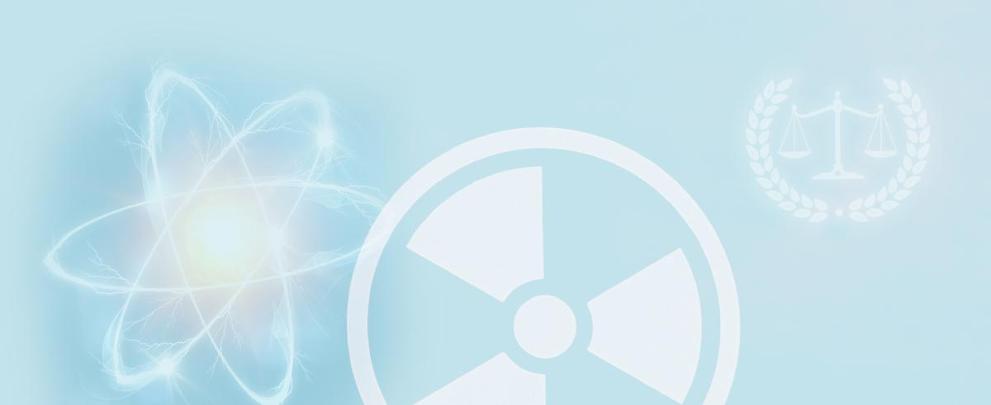
The threat to acquire, produce and disseminate radiological and nuclear hazardous materials for deliberate use has increased substantially over the past ten years. Lack of experience and awareness by law enforcement authorities, as well as by prosecutorial and judicial teams, was identified as the weakest link in the CBRN Safety and Security domain. This gap may result, in some cases, in the loss of critical evidence and errors in the process of the successful prosecution of the identified perpetrators.
To help increasing awareness and the skills needed to investigate and prosecute radiological and nuclear crimes, the European Union has supported within the framework of the EU CBRN CoE the production of ‘A Prosecutor’s Guide to Radiological and Nuclear Crimes’. The purpose of the guidebook is to provide investigators, prosecutors, and justice authorities, with guidance to support the successful prosecution of incidents involving the deliberate acquisition, stockpiling, production, transfer, use or misuse of radiological and nuclear materials.
The ‘Prosecutor’s Guide to Radiological and Nuclear Crimes’ is a non-binding high-level guidance document, covering a wide spectrum of key elements necessary to bring the criminal case from the crime scene to the courtroom. Under the coordination of UNICRI, the guidance document was jointly drafted by a group of 30 experts representing partner international organisations, prosecution and justice authorities, law enforcement and investigative agencies, laboratories, forensics specialists, and relevant subject matter professionals supported by the EU CBRN CoE Project P94 (On-site Technical Assistance to the EU CBRN Centres of Excellence Regional Secretariats).
Guide’s final review meeting and next steps
The ‘Prosecutor’s Guide to Radiological and Nuclear Crimes’ is planned to be sent to publication after internal review and validation sometime in early 2024.
As the Guidebook is near completion, partners involved in the production of the document held recently a Final Review Meeting to provide feedback and comments in relation to the Guide’s content. The meeting represented not only a crucial opportunity to examine ten chapters of the Guide, but also an occasion to provide participants* with an overview of the next steps in operationalising it and integrating it through training packages as part of the professional duties of beneficiary end-users.
The ‘Prosecutor’s Guide to Radiological and Nuclear Crimes’ was well received by the international organisations involved in the meeting, which acknowledged the usability, relevance and timely application of the guide for prosecutors, investigative and judicial authorities.
A project rooted in the Centres of Excellence’s network
The ‘Prosecutors Guide to Radiological and Nuclear Crimes’ is the second in a series of CBRN forensics guidebooks aimed to advance guidance on policies, recommendations and best practices to enforce and build up forensics capabilities in the domain. The first release is the ‘Prosecutors Guide to Chemical and Biological Crimes’, published in 2022.
This series of CBRN forensics guidebooks is an effort that came as a result of implementing two EU CBRN CoE projects aimed to enhance CBRN forensic capabilities across the South East and Eastern Europe region. After completion of these, UNICRI was tasked to coordinate the development of a series of guidance manuals that would support prosecutors and justice authorities to bring the criminal case from a CRBN-contaminated crime scene to the courtroom.
The two guidebooks are unique tools to provide opportunities for strengthening the knowledge, systems, and frameworks from which the EU CBRN CoE and its partners strive to support counter-crime bodies and agencies in the shared quest for justice.
*Over 40 participants attended the online review meeting, including members of the core development team, UNICRI project team, external subject matter experts, regional CBRN forensics experts, and representatives from international organisations and stakeholders including the European Commission, the International Atomic Energy Agency (IAEA), the United Nations Office on Drugs and Crime (UNODC), the International Association of Prosecutors (IAP), the European Commission’s Joint Research Centre (JRC), the Organization for the Prohibition of Chemical Weapons (OPCW), the European Union's Law Enforcement Agency (Europol), representatives of the EU CBRN Centres of Excellence Initiative and the SEEE Regional Secretariat.
Details
- Publication date
- 14 November 2023
- Authors
- Service for Foreign Policy Instruments | Joint Research Centre
- CBRN areas
- Crisis management
- Denying support for misuse and terrorism
- First response
- Illicit trafficking
- Investigation and prosecution
- Legal framework
- Post incident recovery
- Public health impact mitigation
- Safety and security
- CBRN categories
- Radiological
- Nuclear
